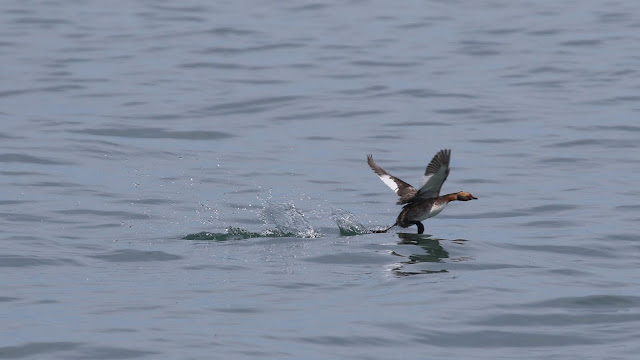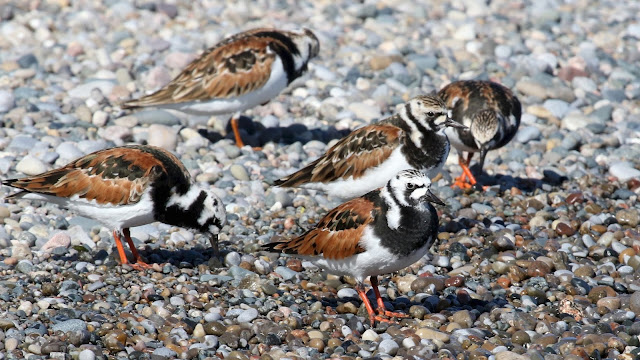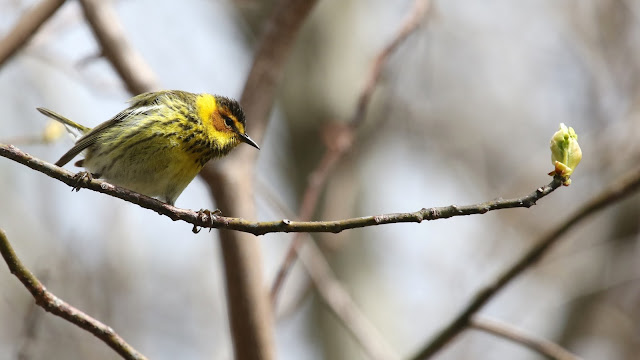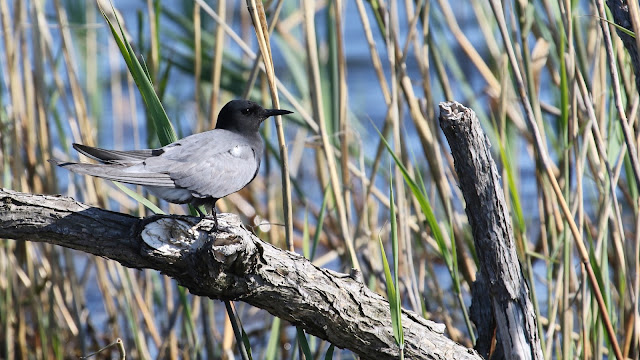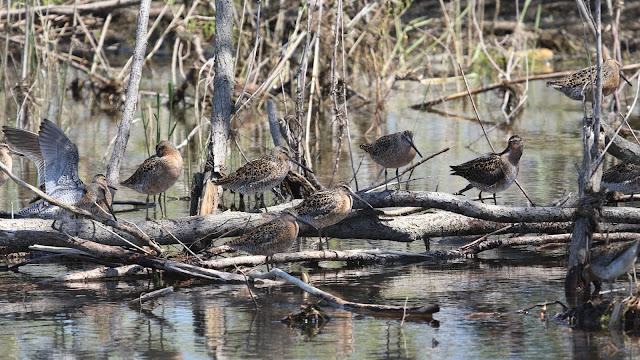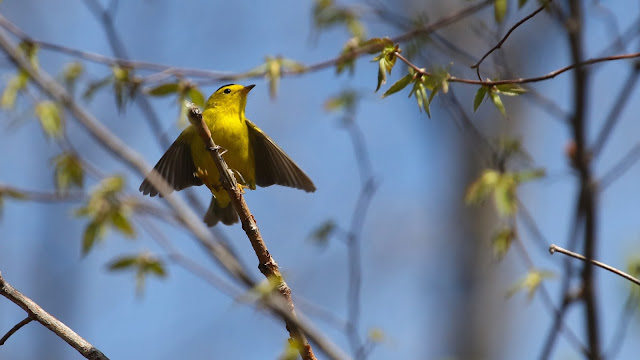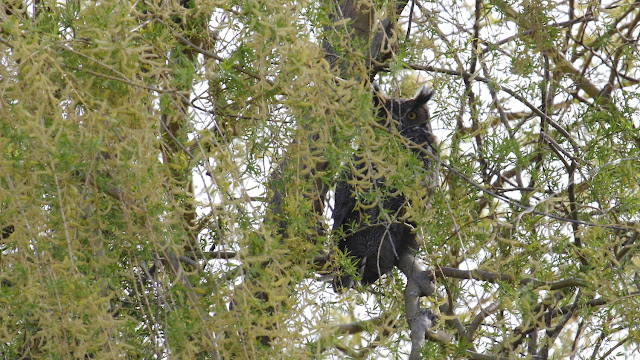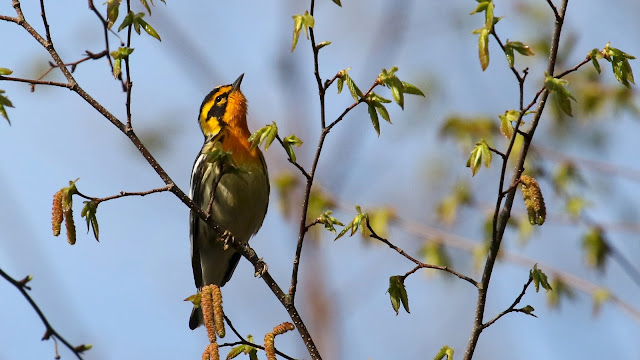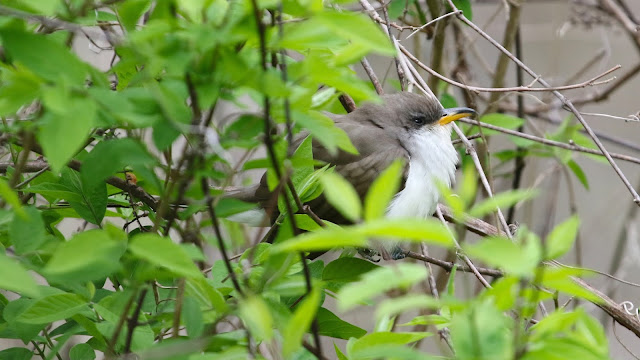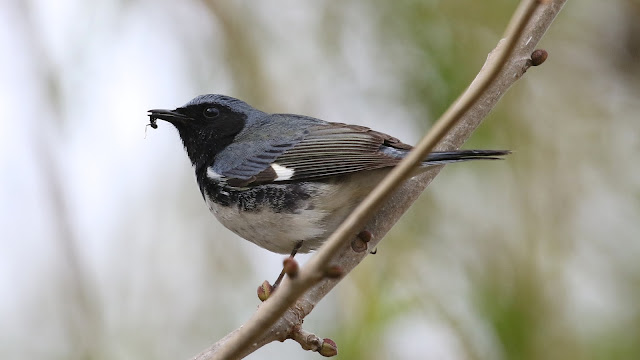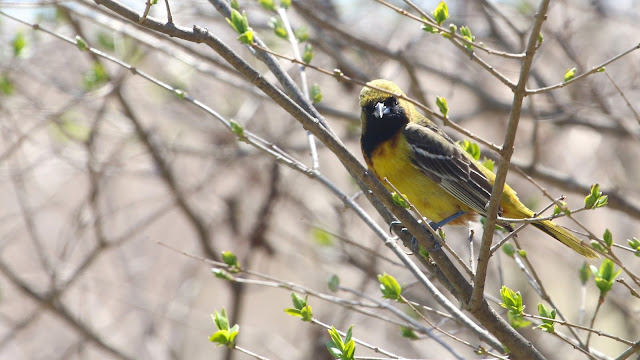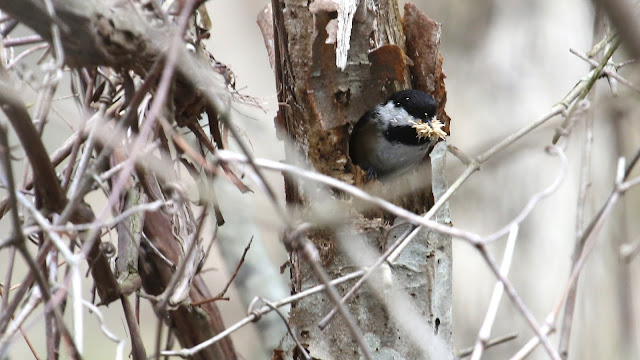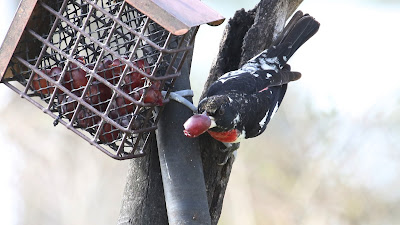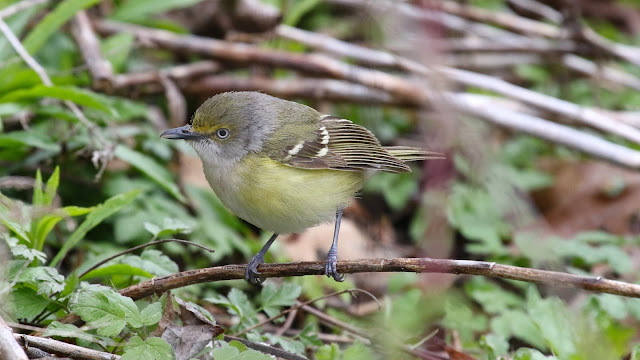Singing Kentucky warbler.
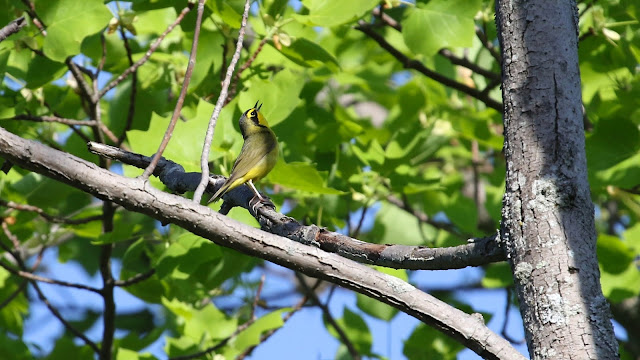
Rondeau Provincial Park, May 30/16 Thanks to Steve Charbonneau who knocked on the door this morning and asked if we would like to see a Kentucky warbler. Obviously we said yes. Steve took us right to it and it sat in the open signing away. Thanks Steve. Geothlypis formosa Unlike most songbirds, a male Kentucky Warbler appears to sing only one song type. He will sing the same one throughout his life. Although counter-singing males do not match each other's song types the way many bird species do, a male may match the pitch of a competitor's song. source - Cornell Lab of Ornithology
